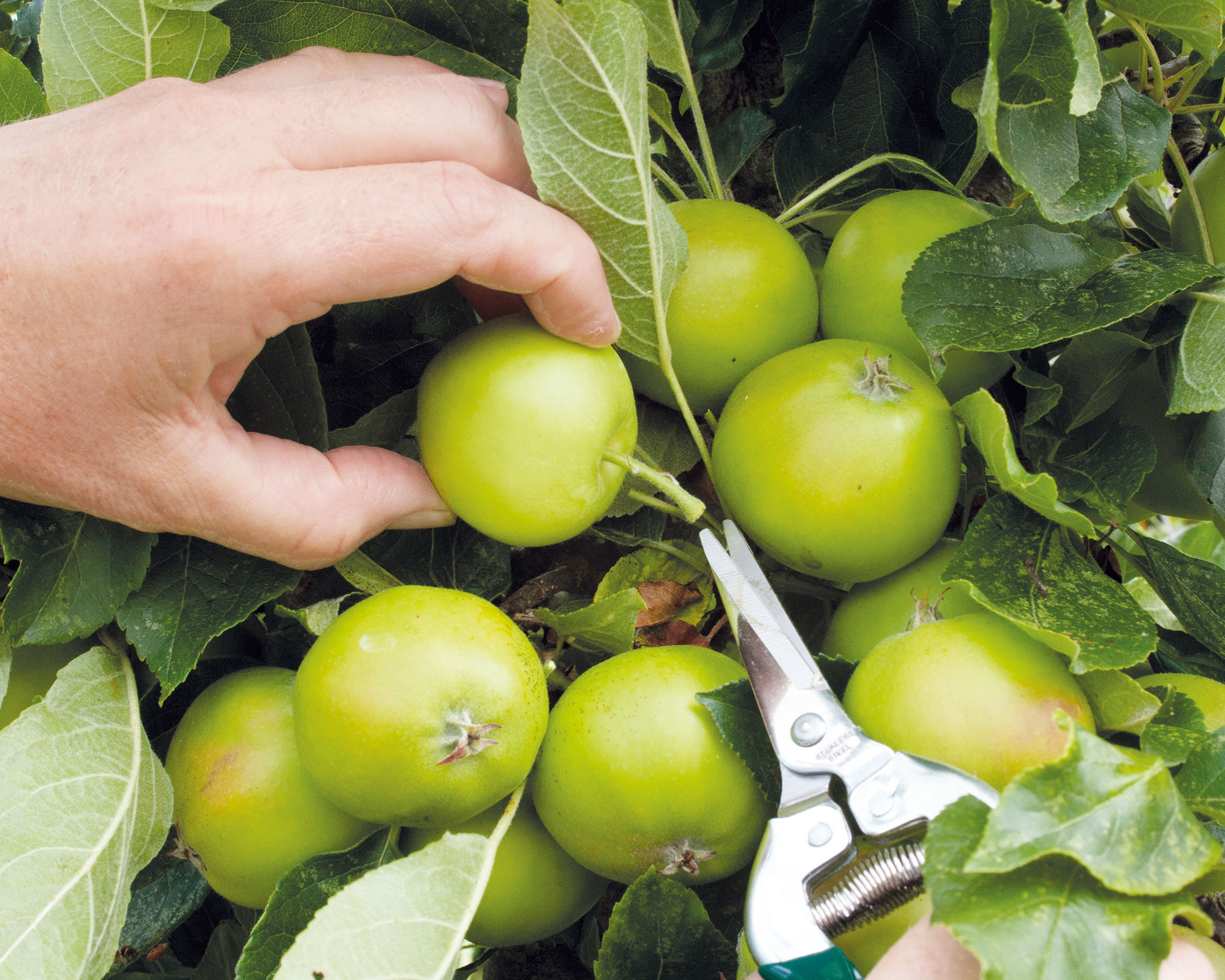This simple trick will give you a better harvest, says organic gardening expert
Why the simple act of thinning out plants will help you grow a bumper crop of fruit and vegetables this summer


As July turns to August, it’s definitely worth taking the time to thin out your fruit and vegetable plants to ensure your harvests are tastier and healthier, says Amateur Gardening’s expert, Bob Flowerdew, who’s dedicated to organic methods.
As Bob points out, crops and flowers can do significantly better if they have 'more sun, more water, more space and more airflow'. And he advises that thinning out crops in your raised garden beds or in fruit trees is the easiest way to improve all four, even at this late stage in the growing season.
'When you reduce the number of plants, those remaining have more of everything between them,' he says. 'This goes double for the crops on the plant. When you reduce the number of apples left on the tree, each remaining fruit will swell more. The final crop becomes higher quality as well as fatter.'

Be ruthless to improve cropping
'You can rarely over-thin,' Bob points out. 'The fewer crops left, the better each cropping.' Diseased, damaged, misshapen and crowded crops are obvious elements to take out during thinning, he adds.
'More of the same competing for limited resources means that the final harvest would have to be divided among more, smaller units, which means more to be picked and processed,' he says. 'If that total number is reduced by thinning, even at this late stage, there are far fewer and larger specimens to be harvested at the end.'
Whether you have a small vegetable garden, are growing vegetables in pots or harvesting fruit from your trees, Bob's method is to thin out plants, and any crops, as soon as they can be identified. He then repeats the exercise again and again as the remaining plants begin to fill out.

Tips for beginners
Tackling thinning out can be daunting if you’re new to growing fruit and vegetables, but with patience and the right equipment, it becomes a satisfying job.
'Make sure to use sharp tools when removing plants so you don't damage the roots of the ones that remain,' says Lindsey Hyland, gardening expert and founder of website Urban Organic Yield.
'Also, take your time and be patient when thinning out your crops – it can be a slow and tedious process, but it will be worth it in the end.'

What to do with the waste
If you’re keen on making the most of your kitchen garden, the thinnings of leafy vegetables, carrots, radish, turnips and onions are usually more succulent than older plants and can be eaten.
Emma Loker, expert gardener at DIY Garden, likes to add thinned pea, herb and cabbage shoots to salads, 'for a pop of earthy flavor'.
Unripe fruits are not so good, so Bob chops them up and uses them as a means of attracting birds into the garden. 'Leave them under trees, as they will also act as a decoy for both birds and other pests such as wasps, which might damage your thriving plants.'

Jayne Dowle is an award-winning gardening, homes and property writer who writes for publications including Sunday Times Home, Times Bricks & Mortar, Grand Designs, House Beautiful and The Spectator. She was awarded the Garden Journalist of the Year accolade at the Property Press Awards in 2021.
